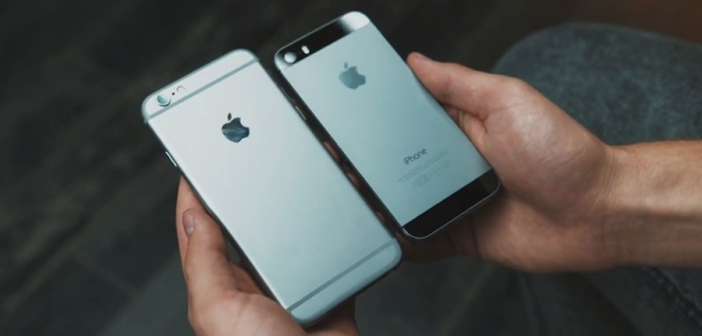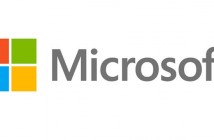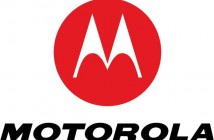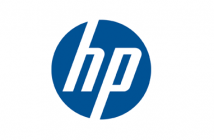During the unveiling of the new iPhone 6 yesterday at 10 am PST, Apple Inc (NASDAQ:AAPL) delivered nearly everything in its newest device that rumors have led the public to expect in the past few months. The new iPhone 6 sports a larger and better display screen that measures 4.7 inches and 5.5 inches, a much faster second generation A8 processor. The device even comes installed with the new iOS8 with a system that can monitor the user’s health and fitness as well as process mobile payments. This debut absolutely has the capability to boost the growth in market share of smart phones.
Apple’s New Practical Approach
Prior to yesterday’s launch, there were only two areas of superiority that Android smart devices enjoyed over the iPhone’s hardware – namely the size of the display screen and near field communications technology (NFC). For many years, Apple refused to increase the display screens of its smartphones to more than 4.5 inches and did not build NFC technology and capabilities into its phones. These actions resulted in damaging consequences. After the event on September 9th, the company did not just only introduce new produts into the market, but it showed investors and analysts that it could change and adapt to the evolving market.
When the iPhone 5 was released, Phil Schiller stated confidently that this was the most optimal size for a smartphone. This time, there were no such assertations. Apple has displayed its willingness to provide what the market wants, rather than simply stick to it’s own idea of what is “the best.” This is a pragmatic approach that Apple has desperately failed to implement in the past. Tim Cook is seemingly welcoming to the change as well – his presentation yesterday was one of the most exciting and enthusiastic of any presentation he has given so far as the head of Apple Inc.
The practical need for NFC was even more visible. Google Inc (NASDAQ:GOOG) (NASDAQ:GOOGL)’s Google Wallet has been available for the past three years, and enables the use of NFC technology for users to make payments in retail stores that are equipped with the technology. Nearly all Android phones are installed with NFC, while on the other hand, Apple marched to the beat of its own drum and refused to jump on the NFC trend.
Apple had even created Airdrop, its own peer-to-peer data sharing system, which uses WiFi in order to enable the sharing of files between iOS devices without having them be near each other. While Airdrop works very well, and not having to physically bump devices to one another is a perk, Apple tragically did not include the mobile payments area in its developments. In the end, the company was forced to take the NFC and incorporate it into its own devices in order to complete its mobile payments system, ApplePay.
What This Means For The Competition
Critics of Apple will without a doubt bring up the competing phones on the market that seem to offer more than the iPhone 6 does. For example, the Samsung (OTC: SSNLF) Galaxy Note 4 offers more screen pixels, and the Microsoft (NASDAQ:MSFT) Lumia 930 gives users more camera pixels. The iPhone 6 is characterized by performing well in many categories rather than go above and beyond in just one or two. At a screen pixel of 300 pixels per inch, both the iPhone 6 and the iPhone 6+ feature more pixels than it is possible for the human eye to process, and the iPhone 6+ has a display screen of 5.5 inches that features full 1080p resolution. If any phone offered anything more than this figure is just an overkill for marketing purposes.
The question about camera pixels is a bit more tricky. More pixels doesn’t necessarily mean better photographs, but the users of the Lumia toot about their cameras all the time, and in most comparisons side by side, the photos produced by the Lumia were significantly better than those by the iPhone 5S. The iPhone 6 sports an enhanced camera with 8 megapixels, so it may not produce photos any better than those shot with a Lumia phone.
However, the iPhone 6+ comes with optical image stabilization, which helps improve videos and still images, especially in low light shots. This may bridge the gap with the Lumia, but we must wait to see test results when they come out to draw an accurate decision.
Besides cameras and display screens, the new iPhones run on an improved next generation A8 64 bit processor. This new processor will be built with a 20 nm process, most likely in TSMC’s factory. According to Apple, this new processer has two times as many transitors that the A7 has, but is smaller in size by 13 percent. In the case of integrated circuits, smaller is usually better. The A8 is faster than the A7 by about 25 percent, and also more energy efficient by 50 percent.
With a second generation processor and a new operating system in the iOS 8, the new iPhones will undoubtedly reinforce Apple’s lead in the smartphone market of the technology sector. No other smartphone will be available in the United States with a 64 bit capability in time for this year’s holiday season. So far, only Samsung’s Galaxy Note 4 provides a 64 bit processor that is comparable to Apple’s, and that one is not even sold in the United States.
Additionally, Apple’s new iPhones feature a wealth of new technology, including HealthKit, ApplePay, and connectivity with the iWatch. Given all these factors, it is likely that the iPhone will start to get market share among the top five smartphone retailers. Samsung, on the other hand, will continue to slip in its grasp of market share. The holiday quarter sales for the iPhone 6 will be enormous. Those sales numbers will be easier to predict as the holiday season draws closer.
What Does This Mean To Suppliers?
The iPhone 6 was very well received yesterday, but there was one red line in the whole presentation. That is that the company’s GTAT fell by 13 percent right after the unveiling of the iPhone 6. The analysts that predicted that the iPhone 6 would have sapphire screens overshot themselves this time. I have previously written another article commenting on how unlikely the sapphire screens would be for the iPhone 6.
Apple did not discuss its plans for sapphire screens for future iPhones, since it could damage its short term sales of the iPhone 6. However, it is extremely likely that the company will incorporate sapphire screens in the future. However, two stipulations must be met first:
First, the plant in Arizona, which is supposed to be operated by GTAT, must increase its production to sufficient levels in order to satisfy the demand for the Apple iWatch as well as the iPhone.
Second, the company must perfect the process of making sapphire glass laminates, and that process must be scaled to levels of mass production.
The whole fiasco of the sapphire screens is just an example of how much technical challenge reports on Apple face. Journalism for the tech business industry relies too much on leaks and rumors, and not enough on technical common sense.
Another important supplier that will be affected by the iPhone 6 is Samsung Semiconductor, who manufactures all of the A-series SOC’s that Apple uses in its iPhones and iPads since 2010. While it isn’t certain whether or not the new 20 nm process is TSMC’s, it will be known to the public once the iPhone 6 goes on sale and companies begin to dissect the smart phone and its A8 processor.
Samsung is currently transitioning its factory operations in Austin, Texas, from making A7 chips to the advanced 16 nm FinFET process. This means that they will not be capable of handling a production volume at the level that Apple requires for the iPhone, so Apple will likely turn to other suppliers.
Also, there is some schedule risk regarding Samsung’s new process, so Apple had to find another maker for the A8. If Samsung reaches a level of production that satisfying Apple’s needs for 16 nm, the iPhone maker could very well go back to Samsung. Once again, this decision will be based on practicality.





Pingback: Generic viagra online
Pingback: cialis dosage 40 mg
Pingback: cialis canada
Pingback: ed pills otc
Pingback: buying ed pills online
Pingback: best erection pills
Pingback: canada pharmacy
Pingback: canadian online pharmacy
Pingback: generic cialis online
Pingback: levitra online pharmacy
Pingback: buy vardenafil
Pingback: levitra cost
Pingback: real money casino online usa
Pingback: viagra canada
Pingback: real casino online
Pingback: real casino online
Pingback: cash payday
Pingback: pay day loans
Pingback: loan online
Pingback: cialis 20
Pingback: play casino online
Pingback: visa casino online
Pingback: online casinos
Pingback: cialis 20
Pingback: generic for cialis
Pingback: cialis internet
Pingback: what is the best online gambling sites
Pingback: viagra pill
Pingback: best online casino real money
Pingback: casinos
Pingback: real money online casinos usa
Pingback: viagra coupon
Pingback: sildenafil
Pingback: buy viagra cheap
Pingback: female viagra
Pingback: viagra for sale
Pingback: cialis tadalafil
Pingback: canadian pharmacy viagra
Pingback: order viagra
Pingback: viagra connect
Pingback: purchase viagra online
Pingback: viagra generic
Pingback: viagra sale
Pingback: viagra 100mg
Pingback: generic viagra sildenafil citrate
Pingback: ceclor coupon
Pingback: celebrex purchase
Pingback: celexa nz
Pingback: cheap cephalexin 500 mg
Pingback: cipro 1000mg generic
Pingback: herbal viagra
Pingback: play casino
Pingback: free slots online
Pingback: free slots
Pingback: play for real online casino games
Pingback: real money online casinos usa
Pingback: payday loans companies
Pingback: online bad credit loans no credit check
Pingback: payday loans no credit check
Pingback: viagra for sale online cheap
Pingback: cbd oil online amazon
Pingback: cbd oil for arthritis pain relief
Pingback: viagra capsules online in india
Pingback: viagra cost per pill
Pingback: cbd oil for pain thru amazon
Pingback: cbd oil for pain management
Pingback: essay buy
Pingback: Generic viagra usa
Pingback: buying essays online
Pingback: federalist papers writers
Pingback: buy viagra pills online uk
Pingback: cleocin 300 mg medication
Pingback: clomid 50 mg pharmacy
Pingback: Buy pfizer viagra in canada
Pingback: clozaril tablets
Pingback: coreg online
Pingback: compazine united kingdom
Pingback: how to purchase coumadin 5 mg
Pingback: cozaar 25 mg price
Pingback: Buy discount viagra
Pingback: cymbalta canada
Pingback: Usa viagra sales
Pingback: cost of ddavp
Pingback: dramamine 50mg otc
Pingback: elavil generic
Pingback: erythromycin 250mg without prescription
Pingback: flomax 0,2 mg pills
Pingback: flonase nasal spray 50mcg online pharmacy
Pingback: imdur 30 mg generic
Pingback: how to purchase imitrex
Pingback: imodium online
Pingback: my website
Pingback: indocin 25mg uk
Pingback: how to purchase lamisil 250 mg
Pingback: buy levaquin 750 mg
Pingback: buy macrobid 50 mg
Pingback: meclizine 25mg cost
Pingback: mestinon 60 mg united states
Pingback: micardis nz
Pingback: mobic no prescription
Pingback: motrin 400 mg canada
Pingback: where can i buy nortriptyline 25mg
Pingback: buy periactin
Pingback: phenergan 25mg pharmacy
Pingback: plaquenil 200 mg online pharmacy
Pingback: prednisolone without a doctor prescription
Pingback: order prevacid 15 mg
Pingback: prilosec 10mg tablets
Pingback: procardia 30mg tablet
Pingback: provigil price
Pingback: cost of retin-a cream
Pingback: risperdal 2 mg without a doctor prescription
Pingback: seroquel 25mg prices
Pingback: singulair cheap
Pingback: where to buy skelaxin
Pingback: spiriva 9mcg nz
Pingback: how to purchase thorazine
Pingback: how to purchase toprol 25 mg
Pingback: cheapest valtrex
Pingback: voltaren 100 mg usa
Pingback: how to purchase zanaflex 4mg
Pingback: zithromax no prescription
Pingback: Visit Website
Pingback: where can i buy zocor 10 mg
Pingback: how to buy zyprexa 7,5mg
Pingback: sildenafil medication
Pingback: tadalafil otc
Pingback: furosemide 100 mg no prescription
Pingback: aripiprazole 10 mg without a prescription
Pingback: pioglitazone 15 mg pharmacy
Pingback: cheap glimepiride 2 mg
Pingback: order meclizine 25mg
Pingback: atomoxetine prices
Pingback: how to buy donepezil 5mg
Pingback: anastrozole no prescription
Pingback: irbesartan 150 mg online pharmacy
Pingback: dutasteride canada
Pingback: olmesartan united states
Pingback: how to buy buspirone 10 mg
Pingback: citalopram tablet
Pingback: cheapest ciprofloxacin
Pingback: clindamycin 150 mg medication
Pingback: clozapine pills
Pingback: prochlorperazine 5 mg online pharmacy
Pingback: carvedilol united states
Pingback: where to buy warfarin
Pingback: divalproex 500mg canada
Pingback: trazodone 50mg without a prescription
Pingback: acetazolamide 250mg otc
Pingback: order fluconazole
Pingback: venlafaxine online
Pingback: pcrsyqos
Pingback: estradiol 1 mg price
Pingback: where to buy etodolac 200mg
Pingback: tamsulosin 0.4 mg united kingdom
Pingback: how long does cialis work
Pingback: wat kost sildenafil
Pingback: oral ivermectin how supplied
Pingback: glipizide without prescription
Pingback: isosorbide prices
Pingback: sumatriptan 50mg tablet
Pingback: loperamide medication
Pingback: comprar cialis
Pingback: azathioprine medication
Pingback: propranolol 80 mg online pharmacy
Pingback: lamotrigine australia
Pingback: terbinafine 250 mg otc
Pingback: how much is amoxicillin cost
Pingback: furosemide 80 mg
Pingback: where to buy azithromycin 500mg
Pingback: buy stromectol pills
Pingback: salbutamol ventolin
Pingback: gemfibrozil 300 mg usa
Pingback: doxycycline for
Pingback: prednisolone feline
Pingback: clomid price
Pingback: priligy 60mg
Pingback: stopping propecia
Pingback: neurontin doses
Pingback: metformin for pcos
Pingback: paxil maximum dose
Pingback: substitute for plaquenil